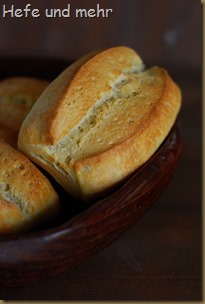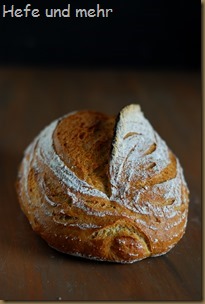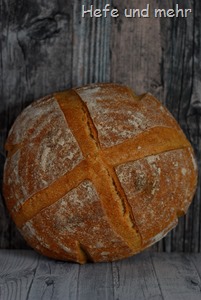 The new Sourdough is ready to bake our first sourdough bread. As a freshly raised sourdough is still a little bit weak, it makes sense to do one (or even better two) sourdough feedings at warm temperature to rise some more yeasts. After this rounds of refreshing the sourdough starter is very active and can be used to prepare the sourdough for the bread.
The new Sourdough is ready to bake our first sourdough bread. As a freshly raised sourdough is still a little bit weak, it makes sense to do one (or even better two) sourdough feedings at warm temperature to rise some more yeasts. After this rounds of refreshing the sourdough starter is very active and can be used to prepare the sourdough for the bread.
As the bread is made with sourdough only, some patient is need while preparing the dough. Especially baking should be considered depending on the proofing status of the loaf and not on the clock. A good method to test if the bread is already ready for baking is pressing thumb carefully into the surface of the loaf. If the dent spring back directly, it still needs to proof for some time. If the dent is filling slowly, the bread can go in the oven, if a strong oven spring is desired. If the dent will stay it is really time to bake. The bread will have still some oven spring.

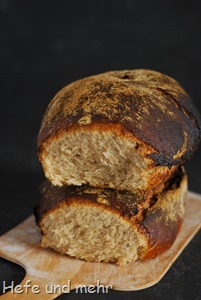 There are a lot of whishes’ for recipes for the bread baking course: the swabian “genetzes” Bread, Baguette, Bread with heirloom grains, yeasted cake, Westphalian Farmer Loaf, Sourdough and Sourdough breads, Salzstangerl, Bagel and Basler Brot. And there are still my personal wishes, a whole grain bread and a multi grain bread. We are not running out of recipes or ideas 🙂
There are a lot of whishes’ for recipes for the bread baking course: the swabian “genetzes” Bread, Baguette, Bread with heirloom grains, yeasted cake, Westphalian Farmer Loaf, Sourdough and Sourdough breads, Salzstangerl, Bagel and Basler Brot. And there are still my personal wishes, a whole grain bread and a multi grain bread. We are not running out of recipes or ideas 🙂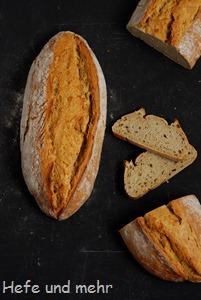 So here is now the promised Spelt bread. I know that many of the readers of this blog like to bake with spelt, but baking with spelt flour is a little bit more challenging then baking with wheat flour, so the recipe comes relatively late in my bread baking course.
So here is now the promised Spelt bread. I know that many of the readers of this blog like to bake with spelt, but baking with spelt flour is a little bit more challenging then baking with wheat flour, so the recipe comes relatively late in my bread baking course.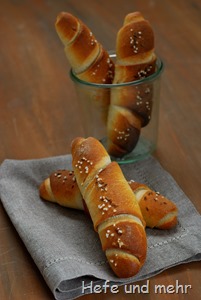
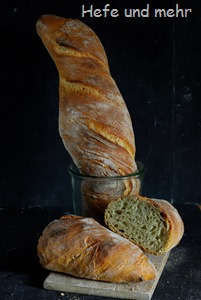 In the last days, the weather was warm and sunny and it finally feels like real spring. The first trees started to flower and the leaves will develop soon and the world will be green once again. And already the first fresh herbs can be found in garden and forest, like wild garlic, ground elder and salad burnet. Blended together this herbs yields an aromatic paste which adds a great flavour to this crusty bread and turns the crumb slightly green.
In the last days, the weather was warm and sunny and it finally feels like real spring. The first trees started to flower and the leaves will develop soon and the world will be green once again. And already the first fresh herbs can be found in garden and forest, like wild garlic, ground elder and salad burnet. Blended together this herbs yields an aromatic paste which adds a great flavour to this crusty bread and turns the crumb slightly green.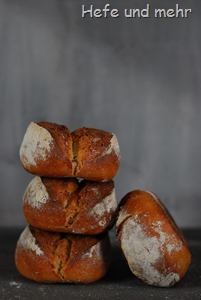
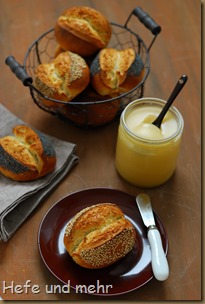 To me, the basic of good breakfast is a good roll. And so we are baking rolls in part three of our little bread baking course. These rolls are looking more complicated then they. For shaping we will use the same method then for the bread we baked last time. And already after 15 minutes the rolls are deeply cut, which is much easier than cutting a fully proofed roll. The cut is carefully laid together and will open beautiful during baking.
To me, the basic of good breakfast is a good roll. And so we are baking rolls in part three of our little bread baking course. These rolls are looking more complicated then they. For shaping we will use the same method then for the bread we baked last time. And already after 15 minutes the rolls are deeply cut, which is much easier than cutting a fully proofed roll. The cut is carefully laid together and will open beautiful during baking.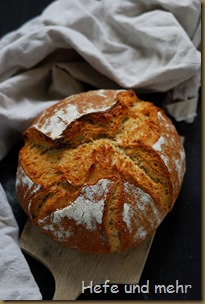 I got a lot of positive feedback to my idea of making a small virtual bread baking course. I’m very happy about it and will start to post more beginner recipes on the blog in the next weeks. And if you have questions, ideas or wishes: Please tell me! I will do my best to include it.
I got a lot of positive feedback to my idea of making a small virtual bread baking course. I’m very happy about it and will start to post more beginner recipes on the blog in the next weeks. And if you have questions, ideas or wishes: Please tell me! I will do my best to include it.